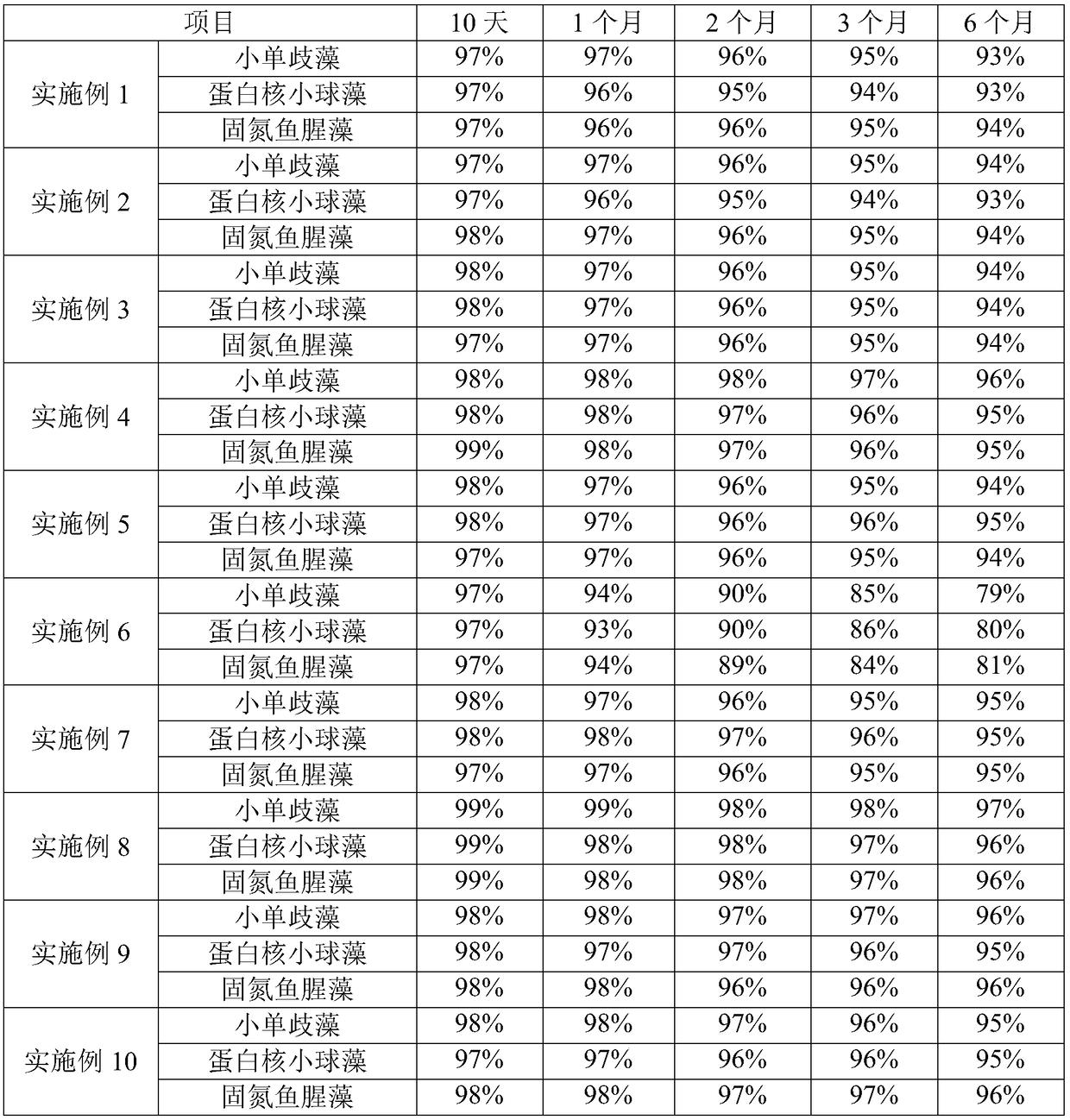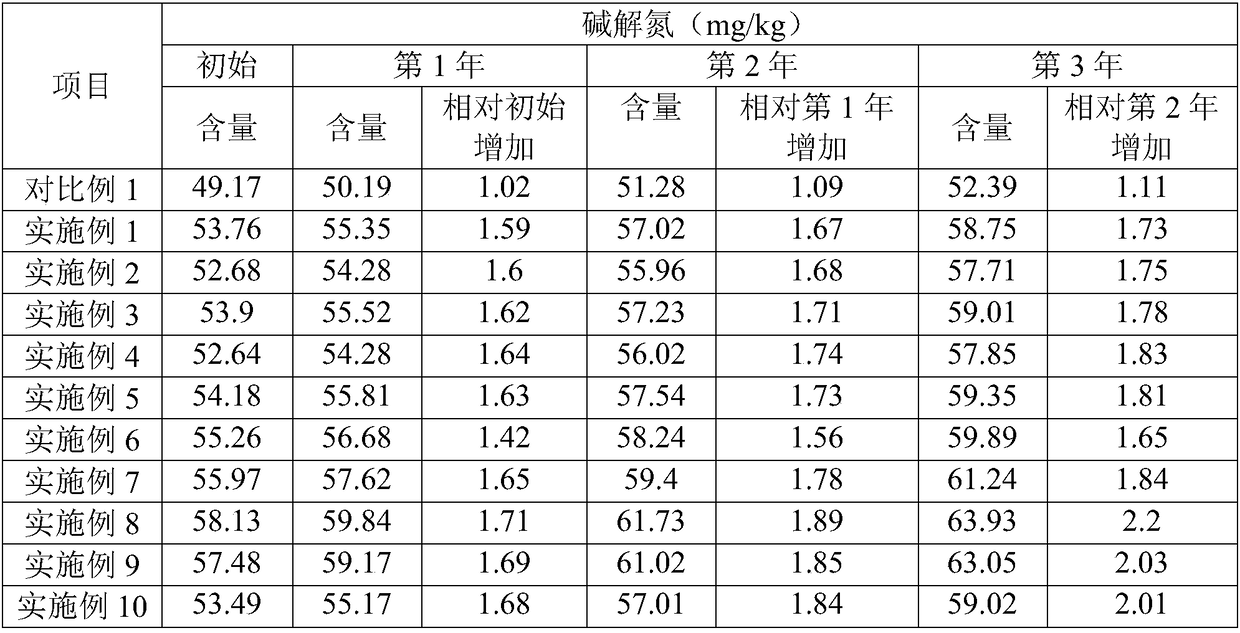Active microalgae cell based nutrient repair solution and culture method thereof
A technology of cell nutrition and microalgae cells, which is applied in the field of agriculture, can solve problems such as limiting the value of fertilizers, and achieve the effects of high microalgae activity, activation of soil trace elements, and soil restoration
- Summary
- Abstract
- Description
- Claims
- Application Information
AI Technical Summary
Problems solved by technology
Method used
Image
Examples
Embodiment 1
[0042] A microalgae active cell nutrient repair solution, the cultivation method includes the following steps:
[0043] S1, expanding the cultivation of Monofidobacterium microella, Chlorella pyrenoidosa and Anabaena nitrogen-fixing algae respectively to obtain three kinds of algae liquids, among which, in the process of expanding cultivation,
[0044] The expanded cultivation process of the three algae liquids includes: selecting and separating a single microalgal cell under a microscope → culturing a single microalgal cell in 15 mL of medium solution for 10 days to obtain 15 mL of algal liquid → transfer to 85 mL of medium solution Continue culturing for 10 days to obtain 100mL of algae solution → inoculate into 0.9L medium solution for 10 days to obtain 1L of algae solution → inoculate into 4L medium solution for 10 days to obtain 5L Algae liquid → inoculated into 13L medium solution and continued to cultivate for 10 days to obtain 18L of algae liquid → transferred to 782L ...
Embodiment 2
[0049] The difference from Example 1 is that in the expanded cultivation of step S1,
[0050] The expanded cultivation process of the three algae liquids includes: selecting and separating a single microalgal cell under a microscope → cultivating a single microalgal cell in 15mL of medium solution for 12 days to obtain 15mL of algae liquid → transfer to 85mL of medium solution Continue culturing for 10 days to obtain 100mL of algae liquid → inoculate into 0.9L medium solution for 12 days to obtain 1L of algae liquid → inoculate into 4L medium solution for 12 days to obtain 5L Algae liquid → inoculated into 13L medium solution and continued to cultivate for 12 days to obtain 18L of algae liquid → transferred to 782L medium solution and continued to cultivate for 12 days to obtain 800L of algae liquid. At the end of the expansion of each stage above, the number of viable microalgae cells is ≥10 6 cells / mL, the number of active microalgae cells in the final obtained algae liquid...
Embodiment 3
[0053] The difference from Example 1 is that in the expanded cultivation of step S1,
[0054] The expanded cultivation process of the three algae liquids includes: selecting and separating a single microalgal cell under a microscope→cultivating a single microalgal cell in 15mL of medium solution for 15 days to obtain 15mL of algal liquid→transferring to 85mL of medium solution Continue culturing for 15 days, obtain 100mL of algae liquid → inoculate into 0.9L medium solution and continue culturing for 15 days, obtain 1L of algae liquid → transfer and inoculate into 4L medium solution for 15 days, obtain 5L Algae liquid → inoculated into 13L medium solution and continued to cultivate for 15 days to obtain 18L of algae liquid → transferred to 782L medium solution and continued to cultivate for 15 days to obtain 800L of algae liquid. At the end of the expansion of each stage above, the number of viable microalgae cells is ≥10 6 cells / mL, the number of active microalgae cells in t...
PUM
 Login to View More
Login to View More Abstract
Description
Claims
Application Information
 Login to View More
Login to View More - R&D
- Intellectual Property
- Life Sciences
- Materials
- Tech Scout
- Unparalleled Data Quality
- Higher Quality Content
- 60% Fewer Hallucinations
Browse by: Latest US Patents, China's latest patents, Technical Efficacy Thesaurus, Application Domain, Technology Topic, Popular Technical Reports.
© 2025 PatSnap. All rights reserved.Legal|Privacy policy|Modern Slavery Act Transparency Statement|Sitemap|About US| Contact US: help@patsnap.com



